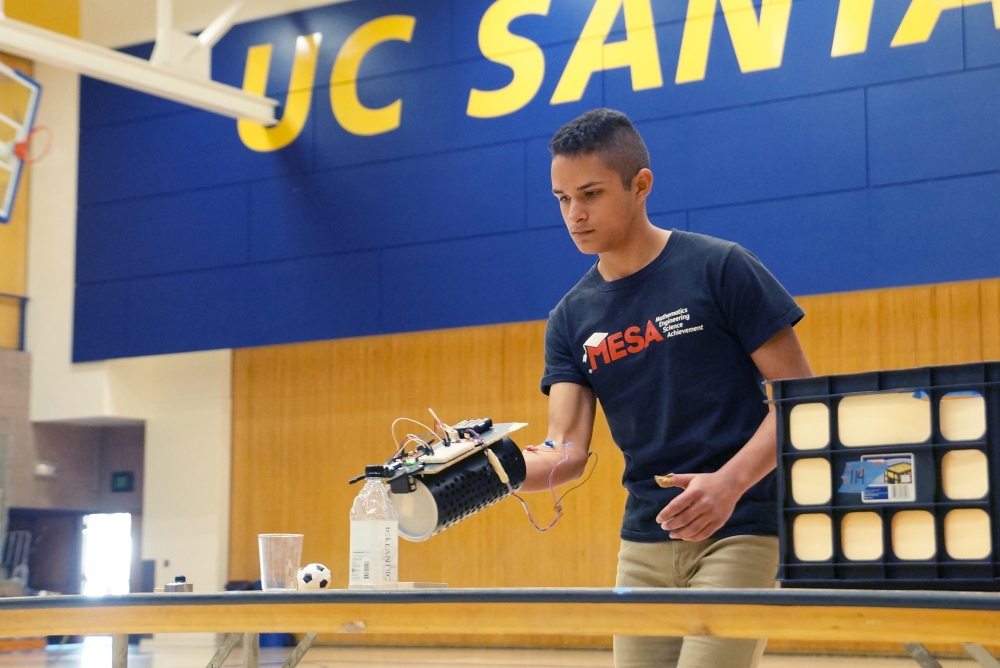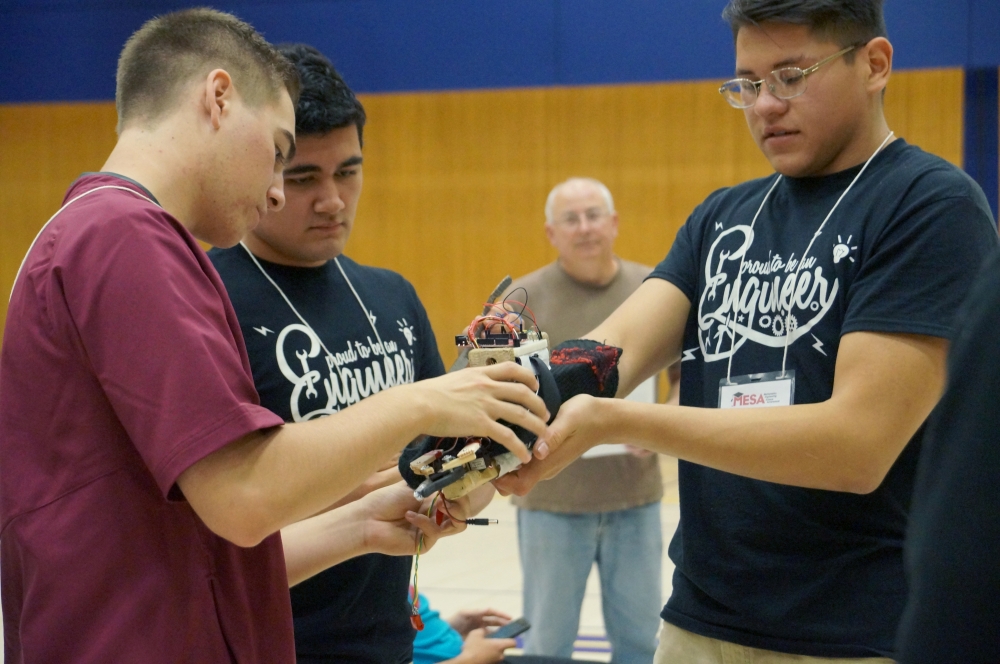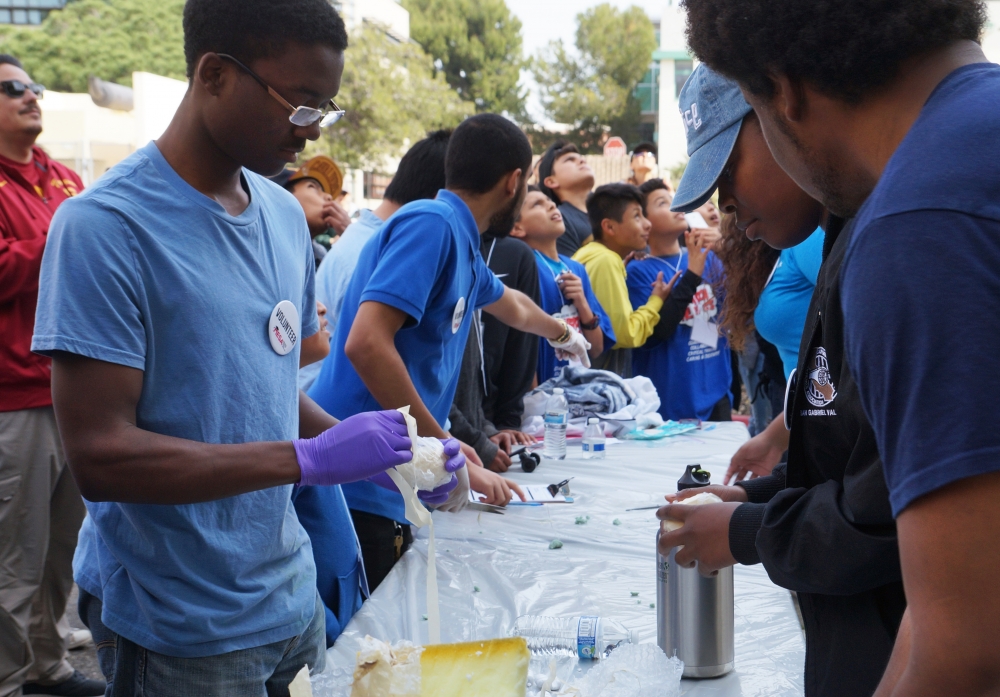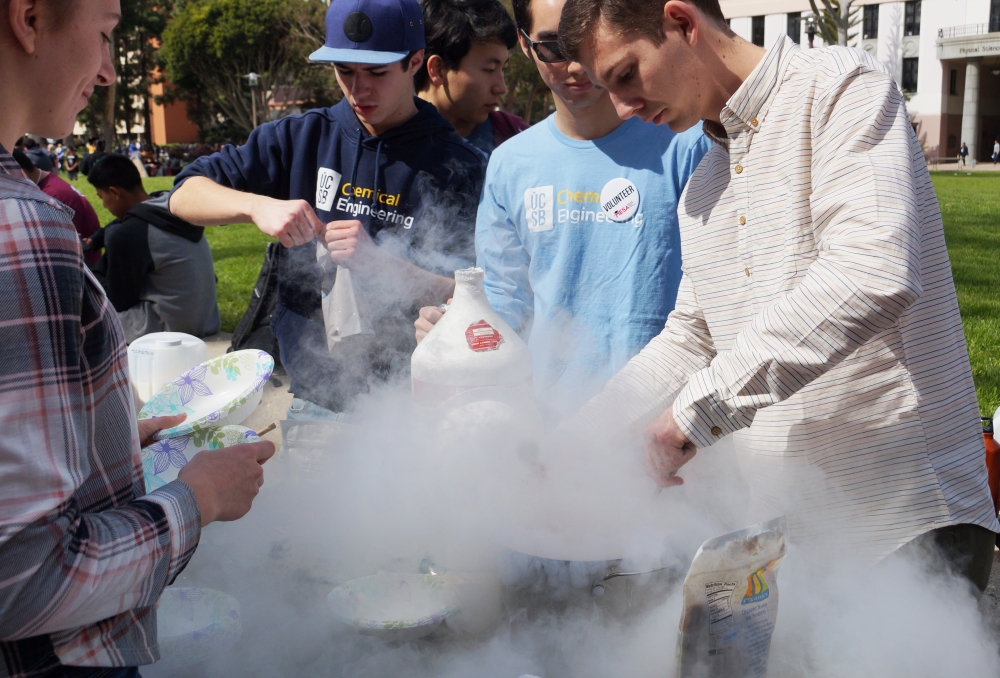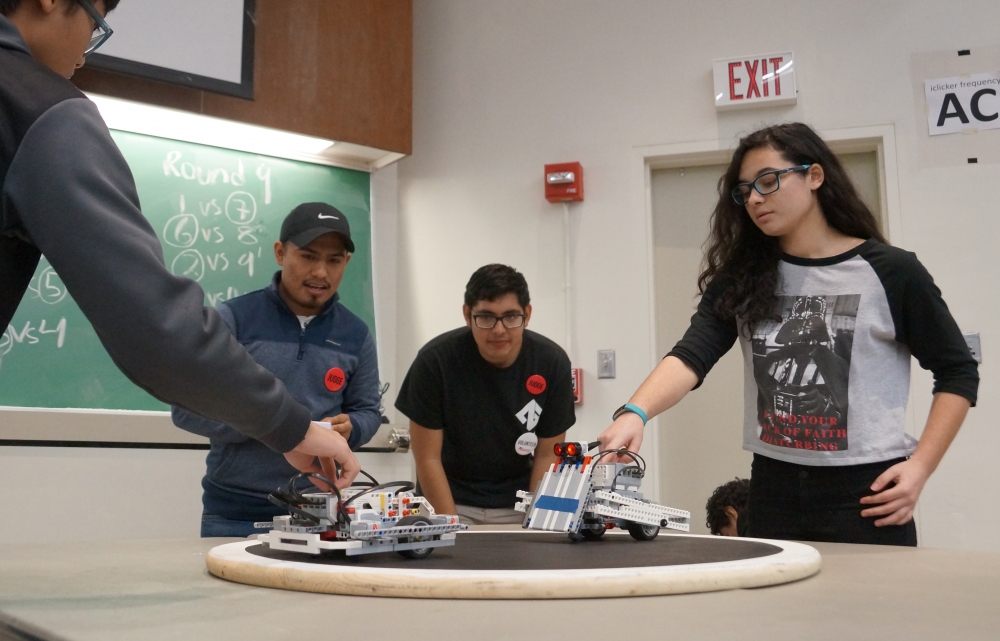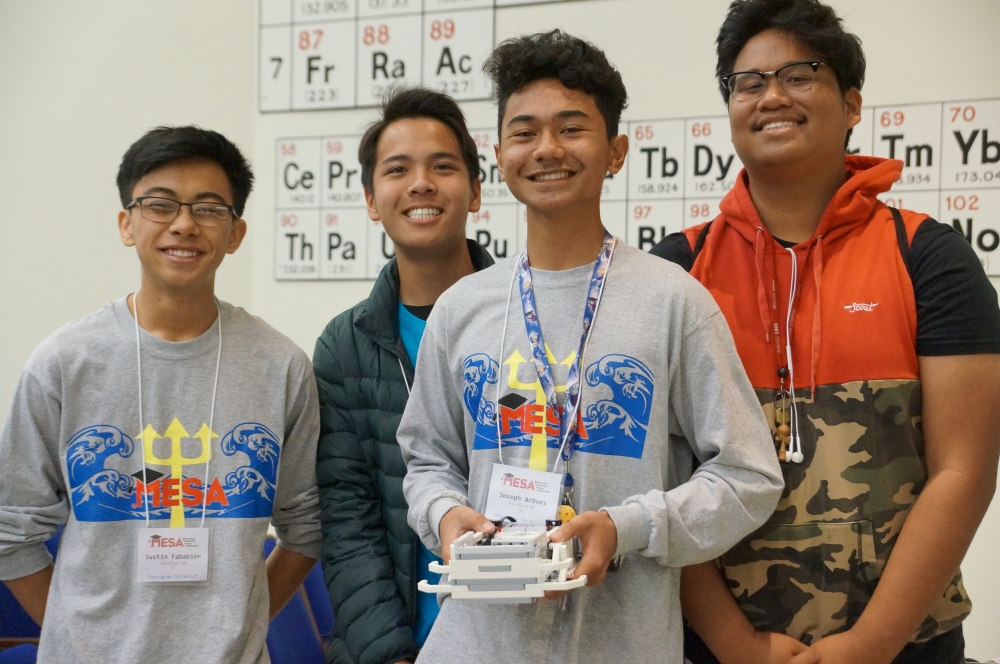Tomorrow’s Engineers
UC Santa Barbara welcomed the engineers and scientists of tomorrow when the campus held its 18th Annual Science and Technology MESA Day. The event, which featured hands-on workshops and experiments, is aimed at giving middle-and high school students a taste of the engineering and science life.
“The most important thing is that they get engaged in STEM,” said Micaela Morgan, K-12 program director in UCSB’s Office of Education Partnerships, referring to areas of study in science, technology, engineering and mathematics.
Close to 500 middle and high school kids participated in this year’s MESA Day.
Geared toward underrepresented students, the MESA (Mathematics Engineering Science Achievement) program is designed to expose a diversity of technically-minded students to engineering-related careers and fields they might be interested in but not had contact with on a regular basis, or the support system readily available to guide them through an education focused on the STEM fields.
To that end, MESA Day participants — many of whom come from traditionally lower-income households — had the opportunity to do some of their own engineering: fabricating prosthetic arms, dropping eggs from great heights, extracting genetic material from strawberries, building robot vehicles and then setting them up for competition, scheming over the best bridges, playing with light, making posters and presentations and getting a taste of programming.
The workshops and experiences gave the students an idea of the kinds of things scientists and engineers do on a daily basis.
At Robertson Gym, teams of high school students spent most of their day in presentation and competition to see whose robotic arm could pick up and manipulate a variety of objects with the most ease and efficiency. At the Engineering Sciences Building, students built lava lamps and modeled human organs. At Broida Hall, sixth graders theorized which packaging designs were the most effective at keeping intact the greatest number of eggs dropped from the sixth floor.
Winners from from these and other MESA Day events will move on to the regional MESA competition in April and from there to the state level. And with luck and a lot of work, they’ll land in nationals.
The learning was made possible through volunteer efforts from UCSB and middle- and high school faculty and academic staff, and college student mentors representing various scholastic engineering organizations such as Los Ingenieros, National Society for Black Engineers and the Society fro the Advancement of Chicanos and Native Americans in Science.
Behind a lot of the fun and make-believe, however, were real-life lessons. For example, students whose bridge projects were disqualified submitted to arbitration, and not everyone measured up. For some it was a crushing experience, Morgan noted.
“But we are training them to be engineers,” she said. “What if you’re designing a rocket and you’re off by .02 centimeters? That could have life-threatening consequences. So, part of it is serious.”
Still, what propelled the students was the camaraderie and excitement of building something that wins a competition, especially in a field where the difference between success and failure is a matter of millimeters. At the Chemistry building, the loudest cheers and shouts were directed at the two teams competing in an unusual third-place tiebreaker in the robot car sumo competition. The winner: a robot named Rice Cooker, built by a team from Pacifica High School in Oxnard.
“I don’t want to have a regular job,” said Joseph Arbues, Rice Cooker’s handler. “But engineering shows that if you have creativity, you can go far.”
